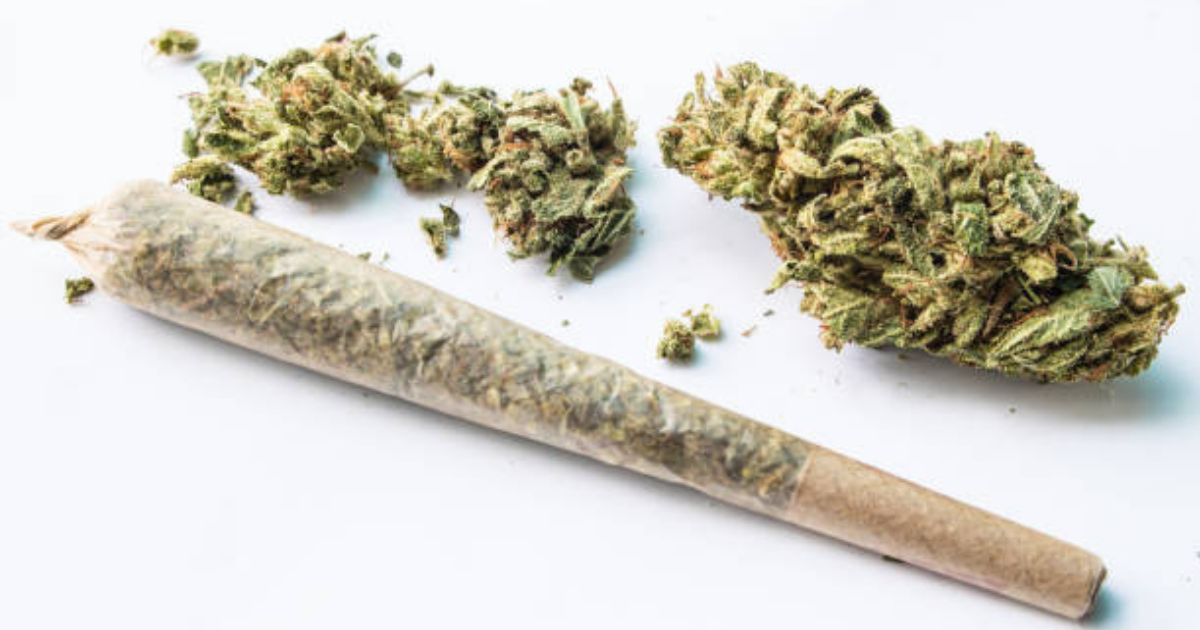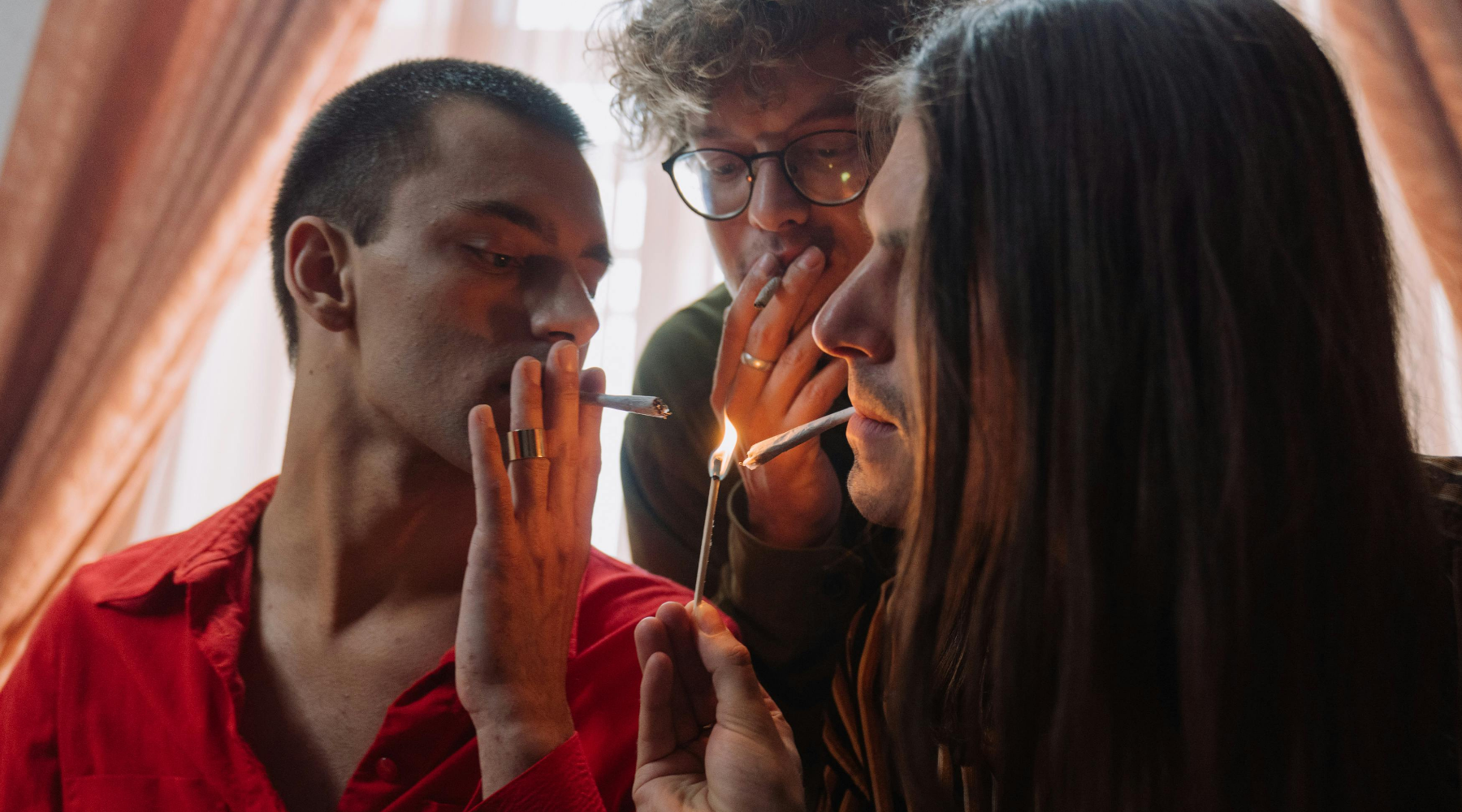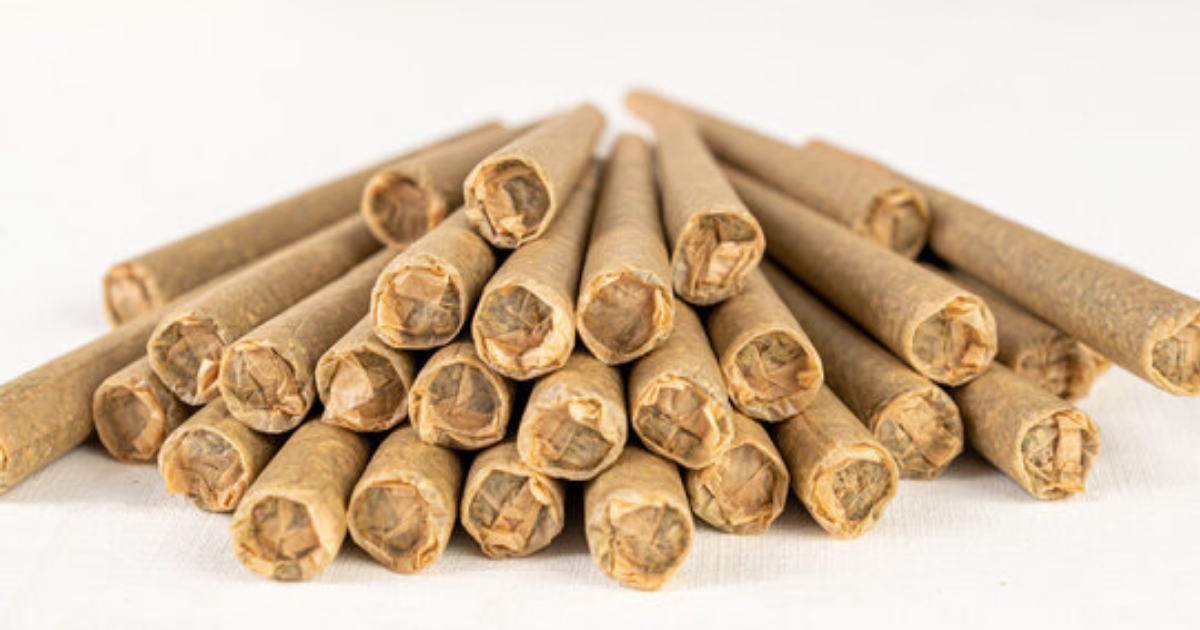Getting a good burn rate is what separates a mid session from a clean, full, no-stress one. The kind where it hits right, lasts long, and doesn’t leave the cone half-charred and running down one side.
People can argue all day about filters or paper types, but at the end of it, it's the details that make or break a pre-roll.
Knowing what impacts burn rate changes the game, and these pre roll tips are built exactly for that reason.
Why Burn Rate Matters Every Single Time
Burn rate isn't just a buzzword. It's the one metric that quietly controls everything. It decides how much you're actually getting out of your material, how long the session rolls, and whether you’re gliding through the experience or fighting it with every pull. Nail the burn rate, and everything else lines up. Mess it up, and even the best flower won't save a bad cone.
The burn rate becomes the heartbeat of the roll. Too fast, and your product is gone before the high even settles in. You’re left staring at ash, wondering where it went. Too slow, and it's a stop-and-go ride with half-burned paper and that annoying need to keep relighting. Neither extreme gives you the session you’re aiming for.
A good burn rate keeps the energy steady. It lets you pass it around without explaining burn issues or reworking the tip. When airflow, pack, and moisture are in sync, the cone does its thing. No fuss, no second guessing. Just steady, flavorful hits from start to finish. That’s why burn rate isn’t optional. It’s essential.
Burn Rate and Material Efficiency
When the burn rate is off, you're either wasting product or dragging through underwhelming hits. A cone that flames too fast can chew through a gram in minutes. All that effort grinding, packing, and prepping? Gone before you even settle in. On the flip side, slow-burning cones with uneven distribution mean unburnt pockets and wasted flower left behind.
You want to maximize the yield of your roll. That doesn’t mean making it last forever. It means every bit of your material is used cleanly and evenly. A consistent burn ensures that all zones inside the premium pre-rolled cone catch at the right time, giving a smooth ride from spark to roach.
Efficiency in this game is everything. When your flower costs top dollar, wasting it due to bad combustion is like torching your stash on purpose. Getting the burn rate right means you’re smoking smart, not just smoking.
How Burn Rate Impacts Flavor and Flow
The pace at which your cone burns directly affects how it tastes. Burn too fast, and you’re overheating the terpenes. That leads to harsh hits that smack your throat instead of coating your taste buds. Burn too slow, and you lose momentum. The flavor goes flat, and the session starts to drag.
A steady burn rate keeps the terp profile alive. It brings out the subtle notes of your strain: the citrus in the limonene, the pine in the pinene, the calm sweetness in the linalool. Each hit stays cool enough to taste, but hot enough to release the goods.
Flow matters too. If you're pulling like your lungs are fighting paper, it ruins the rhythm. A controlled burn keeps the airflow open, the smoke rolling, and the flavor on point. That’s the difference between just getting high and actually enjoying it.
The Role of Burn Rate in Session Timing
Burn rate decides the pace of the entire session. You might want a quick hit before heading out, or maybe you’re settling in for a long sesh with the crew. The way that cone burns needs to match that mood. If it's burning too fast, you're done before the vibe even clicks. Too slow, and people lose interest halfway through.
Timing isn’t just about how long it lasts. It's about consistency from start to finish. A proper burn rate avoids early canoes, mid-session re-rolls, or burnt fingers by the end. It stays true to the pace you planned when you packed it.
Getting that timing right puts you in control of the session. You're not adjusting to the cone. It's adjusting to you. That’s why burn rate matters every time you spark up. It sets the tone, keeps it steady, and lets the whole thing flow like it’s supposed to.
How to Pack Pre-Rolls for Good Burn Rate
Even with the perfect grind, your pre-roll can still fail if the pack is off. Packing is where the airflow is shaped, where density gets balanced, and where burn rate is truly locked in. Too tight and you’re puffing through resistance. Too loose and it’s a floppy canoe waiting to happen. This is where control lives.
The goal is to find that balance where airflow stays clean but the material burns slow and even. It’s not about stuffing the cone like a trash compactor. It’s about building layers that breathe.
A properly packed cone sets the tone for the entire session and turns your raw material into a functional, dialed-in smoke.
Grinding Right: The First Step That Always Counts
Grinding the material right is the one move that sets up everything else. Too chunky, and it tunnels. Too fine, and it clogs. The sweet spot is that mid-fluff grind, light enough to breathe, tight enough to stack.
A consistent grind leads to a consistent burn. The goal here isn’t powder. It’s structure. Shredders or grinders that leave a mix of dust and chunks are killing airflow. What works best is gear that delivers a smooth, even texture every time.
Dry But Not Too Dry: Material Moisture Levels
If the grind feels like sand, expect it to burn up in no time. Too dry, and it torches way too fast. Too moist, and it won’t even light properly. Keeping the balance on humidity is a key pre roll tip that doesn’t get talked about enough.
The ideal range is slightly springy. Material should break apart easily, but still hold a bit of bounce. Store it airtight. Don’t let it sit out too long before rolling, especially under fans or lights. Even 10 minutes of dry air exposure can throw everything off.
Packing Tight, But Not Too Tight
A good pack starts with pressure, but not the kind that chokes the airflow. Overpacking leads to hot burns and uneven hits. Loose packs burn patchy and make cones sag halfway through.
The trick is finding that in-between zone where airflow stays smooth but the cone holds firm. Using a proper tamping tool, and packing in layers instead of dumping it all in one go, makes a major difference. It builds shape and keeps density even from top to tip.
Cone Shape: Why It Affects the Burn
Cones are more than just paper rolled at a slant. Shape affects how air flows through the entire burn. A long taper creates a slower burn, while wider cones burn faster and hotter.
For anyone chasing the perfect session, picking the right cone shape to match the grind and pack style makes things a lot smoother. Don’t just grab any size. Match the width, length, and taper to the material and how long the session is meant to last.
Airflow Is Everything
It doesn’t matter how pretty the pre-roll looks if the draw feels like sipping through a blocked straw. That’s where airflow becomes the unsung hero of every burn. If it pulls easy and burns steady, the rest falls into place.
Maintaining airflow means keeping the pack balanced, the tip clear, and the paper dry. When a cone gets soggy or too compressed at the bottom, the whole airflow gets thrown. Checking the drag before lighting up is a small habit that saves the whole experience.
Choosing Paper That Burns Right
Different papers burn at different speeds. Thinner rolling paper gives a slower, more controlled burn. Thicker papers can torch faster, especially when mixed with a tight pack. This is one of those pre roll tips that feels small but has big impact over time.
Always match paper weight with material density and moisture level. A thin paper with dry material can go up like a match. Thicker paper with moist material can drag out too long. Testing different combos helps lock in the ideal balance.
Crutches: The Unsung Heroes
Crutches aren’t just there to keep fingers clean. They help hold shape, direct airflow, and keep burns consistent. A well-rolled crutch gives the cone a sturdy base, helps cool the smoke, and keeps draw resistance low.
The size and style of the crutch also affect burn rate. Wider crutches let more air pass through, which can heat things up. Tighter crutches slow it down and keep it cooler. Getting this balance right depends on the rest of the setup, but skipping the crutch is asking for trouble.
Storage Before the Sesh
Cones don’t get better with time unless they’re stored properly. Light, air, and humidity all play roles in throwing off the burn. The moment a packed cone gets too dry or slightly crushed, burn rate takes a hit.
Keeping pre-rolls in airtight containers, in a cool dark place, preserves everything from flavor to structure. That’s not just a storage tip. It’s burn insurance. Letting cones sit out in trays under lights for hours is asking for uneven burns and frustrating sessions.
What to Do After Packing?
You’ve packed it right, the cone’s holding shape, and it’s looking solid. But don’t spark it just yet. What you do right after packing can make or break how well that cone burns.
Too many people skip this step and then wonder why their pre-rolls canoe or torch unevenly. The post-pack stage is about letting the material breathe, settle, and prep itself to burn slow, clean, and steady.
Letting your cone chill for a few minutes gives it time to find its natural shape.
Whether you're rolling by hand or using a filling machine, that short rest period lets the grind compress evenly under its own weight. It’s the difference between a roll that burns like it’s on rails versus one that needs constant rescue.
Here’s what matters after the pack is done.
Letting It Settle After Packing
A freshly packed cone needs a minute to settle. That little bit of rest helps material adjust and settle naturally into shape. Especially when using filling machines, letting cones sit for 5 to 10 minutes before twisting and lighting makes the burn more stable.
This is where vibration packing or light tamping helps even more. It reduces pockets and air gaps that show up during the first light. A settled cone burns longer and more evenly, plain and simple.
Lighting Like a Pro
Getting the burn right starts with how it gets lit. Rushing the light creates sideburns and canoes. Slow rotation over the flame, even lighting around the rim, and a few easy puffs set the tone.
If the cherry isn't fully formed before the first big pull, uneven burning becomes almost guaranteed. One of the easiest pre roll tips to follow: always take time on the light. That’s what decides how the rest of the cone behaves.
Fixing a Cone That Starts to Canoe
Even when everything’s dialed in (grind, moisture, pack, paper), sometimes the cone still decides to do its own thing. And that thing is usually canoing. It’s that dreaded moment where one side flames up while the other just sits there wasting potential. If you let it keep going, the whole roll ends up lopsided, burnt out, and annoying to hit. But catching it early and knowing how to react can keep the sesh on track without needing to start over.
Fixing a canoe isn’t about luck. It’s about reading the cone, adjusting the draw, and applying the right fix at the right moment. Do it fast, and you’re back in business. Wait too long, and it’s a one-way trip to a weak session.
What Causes Canoeing in a Pre-Roll?
Canoeing usually kicks off from uneven combustion, and that can happen for a few reasons. The most common cause is a bad light. If the tip doesn’t get evenly torched, one side catches faster and outruns the other. Packing inconsistencies can also be to blame. Tight clumps on one side and loose grind on the other create imbalance in airflow and fuel distribution.
Moisture is another silent killer. If one part of your cone is slightly damper than the rest, that side resists the flame. Meanwhile, the dry side goes up quick, creating that canoe pattern. Even over-handling the cone before the light can create small paper warps or bends that throw the burn path off.
Understanding these triggers is what lets you fix a canoe in real-time instead of standing around watching your roll go sideways.
Real-Time Fixes That Actually Work
The second you see one side burning faster, stop hitting it. That’s the first rule. Pulling harder only feeds more air to the flame and makes the uneven burn worse. Instead, rotate the cone so the slower-burning side is facing down. Gravity helps heat rise and catch the lagging part of the roll.
For small canoes, a quick lick of your finger and a light pinch on the burning edge can slow it down enough to let the other side catch up. Don’t overdo it. You’re not trying to soak the cone, just slow the hot zone slightly. Follow that with a slow, steady puff to rebalance the cherry.
For bigger canoes, you might need to relight the side that’s falling behind. Hit it with a flame while gently rotating and puffing until both sides glow evenly. If you stay calm and act fast, the fix takes seconds.
How to Prevent Canoes Before They Start
The best fix is prevention. That means taking your time with the light. Always rotate the cone over the flame and make sure the full rim catches before you pull. You want an even cherry all the way around before you start smoking. Anything less and you’re setting yourself up for trouble.
Make sure your pack is balanced. Cones that feel firmer on one side are likely to canoe. Use proper tamping techniques and layer the pack so the grind distributes evenly throughout the cone. No dense clumps. No air pockets.
Also, keep an eye on storage. If your pre-rolls are sitting out under a fan or light, parts of the cone can dry faster than others. That uneven moisture is often the root cause of canoes. Airtight containers and consistent prep keep the cone ready to burn as one unit, not two halves fighting each other.
Running Production? Batch Testing is Key
In a setting where cones are packed in volume, running test burns before pushing a full batch out the door is non-negotiable. One or two testers give feedback on moisture, pack density, and airflow before the full tray hits the shelves.
That’s how quality stays consistent. It’s easier to make one adjustment before rolling 100 more than to get 50 complaints about bad burns. Batch testing is one of the most underused but important pre roll tips in any serious setup.
FAQs
What affects burn rate the most in a pre-roll?
The biggest factors include grind consistency, material moisture, packing density, cone shape, and airflow. Burn rate is the result of how all those parts come together. Ignoring even one of them can throw everything off.
Why do cones burn unevenly?
Uneven burns usually come from uneven packing, poor grind texture, or lighting too quickly. Another common reason is letting cones dry out before use, which causes one side to catch faster than the other.
How tight should a pre-roll be packed?
Tight enough to hold shape and resist sagging, but loose enough to pull air through without resistance. Overpacked cones burn hot and can get clogged. A layered pack with light tamping gives the best results.
Should pre-rolls be stored after packing?
Yes. Pre-rolls should be stored in airtight containers away from light and heat. This helps maintain moisture levels and structural integrity, both of which are crucial to a steady burn rate.
What is the best way to light a pre-roll?
Slowly and evenly. Rotate the tip over the flame to get a full, even cherry. Take a few light puffs to set the burn before pulling harder. Rushing the light usually leads to canoes or uneven burns.





LEAVE A COMMENT
All comments are moderated before being published.
This site is protected by hCaptcha and the hCaptcha Privacy Policy and Terms of Service apply.